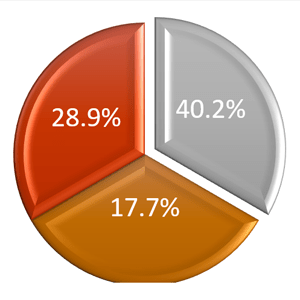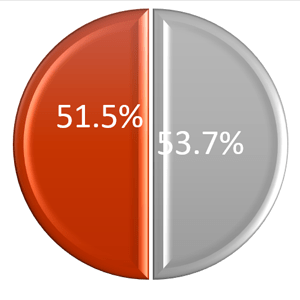State of Child Nutrition in Pakistan
Child nutrition remains a critical public health issue in Pakistan, affecting millions of children and contributing to long-term health and developmental challenges. Malnutrition in the form of stunting, wasting, underweight, micronutrient deficiencies, and poor breastfeeding practices continues to threaten the well-being of children across the country.


SPARC’s objectives since inception have been to:
- Protect the inherent right to life of everychild, and to promote every child’s survival and development
- Reduce infant
- Promote the right of families to have enough nutritious food.
- Promote the right of women to full sup- port for successful breastfeeding and for sound infant feeding practices.
- Advance the right of health workers and consumers of hospitals to be free from commercial pressure.
Malnutrition in Pakistan
The right nutrition at the right time is essential for child survival, health and development. Well-nourished children are much more equipped to grow and learn, act as productive members of society, and respond well in combatting disease, disasters and other global crises. Poor nutrition, by the same logic, impacts on health, education and wellbeing through generations.
The situation is quite dire in Pakistan, with stunting and wasting heavily prevalent in the country. Stunting does not only mean that a child is not having enough to eat. It is about the quantity and quality of diet besides other factors. Inadequate nutrition among mothers during pregnancy is one of the main reasons of malnutrition among children leading to stunting.
Nearly 10 million Pakistani children suffer from stunting.
Only 31 per cent of children are exclusively breastfed for the first six months of life. As a result, more than half the children under five years of age are deficient in vitamin A, 40 per cent are deficient in both zinc and vitamin D, and nearly 62 per cent are anaemic.
The devastating result of acute malnutrition leads to wasting, literally wasting away to skin and bones. Wasting is extremely high in Pakistan, with several areas in the country considered to be at emergency level of wasting.
8 out of 10 children in Pakistan do not eat right type and quantity of food.
Pakistan ranks among the countries with the highest burden of malnutrition. According to the National Nutrition Survey (NNS) 2018, key indicators of child malnutrition are:
- Stunting (low height-for-age): 40.2% of children under five suffer from stunted growth due to chronic malnutrition and poor maternal health.
- Wasting (low weight-for-height): 17.7% of children under five experience wasting, an indicator of acute malnutrition and food insecurity.
- Underweight (low weight-for-age): 28.9% of children under five are underweight, reflecting both chronic and acute malnutrition.
.

- STUNTING
- WASTING
- UNDERWEIGHT
Micronutrient Deficiencies (Hidden Hunger)
Even children who appear to be well-fed may suffer from micronutrient deficiencies, commonly known as hidden hunger. These include:
- Iron Deficiency Anemia (IDA): Around 53.7% of children under five are anemic, leading to fatigue, impaired cognitive development, and weakened immunity.
- Vitamin A Deficiency: Affects 51.5% of children, increasing susceptibility to infections and vision problems.
- Zinc Deficiency: Weakens immunity and contributes to increased cases of diarrhea, pneumonia, and poor growth.
- Iodine Deficiency: Leads to cognitive impairments, especially in children from mountainous and remote regions.

- IRON DEFICIENT CHILDREN
- VIT-A DEFICIENT CHILDREN
Breastfeeding Practices in Pakistan
Pregnant women need a diverse diet rich in vitamins and minerals though this is rarely the case in Pakistan.
Breastfeeding rates in Pakistan have dropped considerably over the last 20-30 years.
According to UNICEF the global breastfeeding rates have remained stagnant since 1990 with only 36 per cent of children less than six months exclusively breastfed in 2012.
According to demographic and health survey of Pakistan 2012-2013 rate of exclusive breastfeeding is 38% and 67% for non-exclusively breastfed. In a study conducted in Pakistan, the percentage of breastfeeding in housewives was 77% while only 23 % in working mothers.
The decline is blamed largely on myths and misconceptions spread through years of extensive and aggressive marketing by the baby food industry
- Exclusive breastfeeding (first 6 months): Only 48% of infants are exclusively breastfed, despite WHO’s recommendation of 6 months of exclusive breastfeeding.
- Early initiation of breastfeeding (within one hour of birth): Only 42% of newborns receive breast milk in the first hour, reducing protection against infections.
- Introduction of complementary feeding (after 6 months): Only 57% of infants aged 6-8 months receive appropriate complementary feeding along with breastfeeding.
- Challenges in breastfeeding include cultural taboos, lack of awareness, aggressive marketing of infant formula, and inadequate maternity support for working mothers.

The International Code
The International Code of marketing of Breastmilk Substitutes was adopted by the World Health Assembly in 1981. It prohibits the marketing and promotion of baby milks and foods. Subsequent WHA Resolutions on infant feeding reflect changes in scientific knowledge and industry promotion techniques and are considered a part of the Code. |


